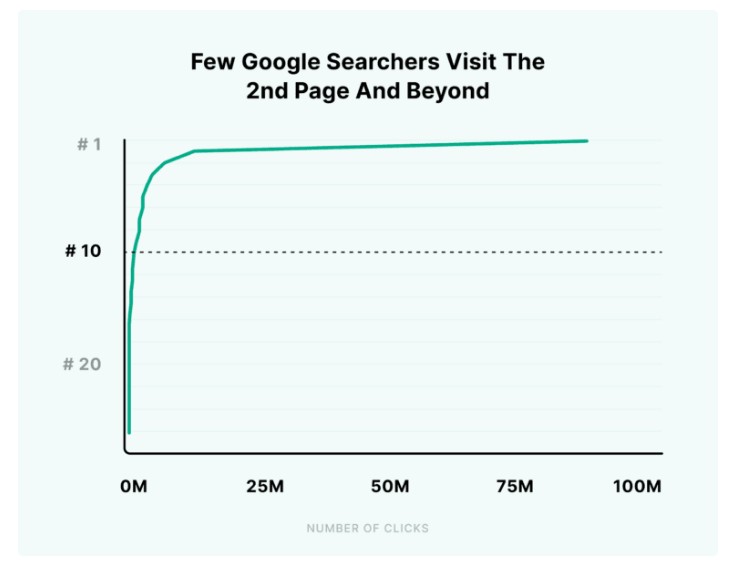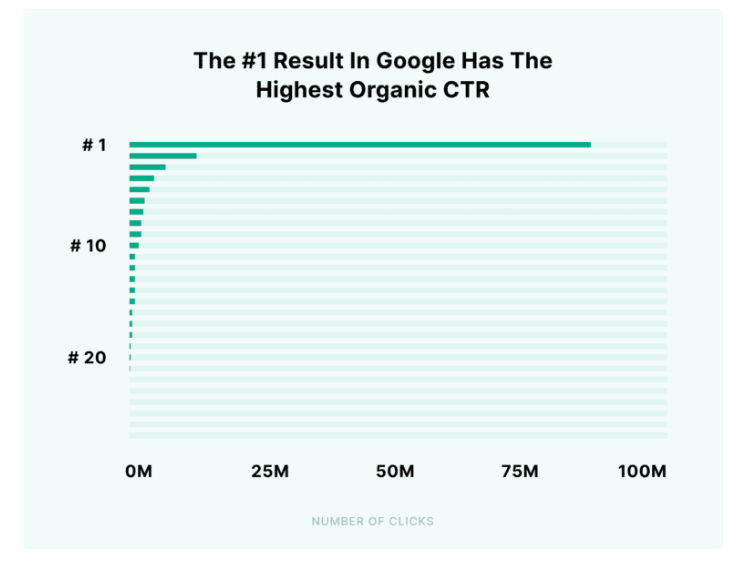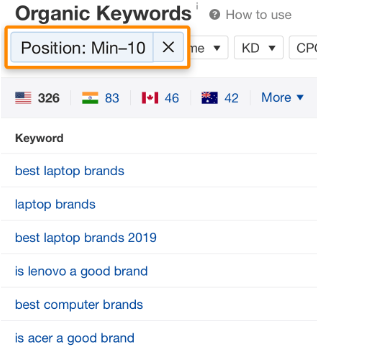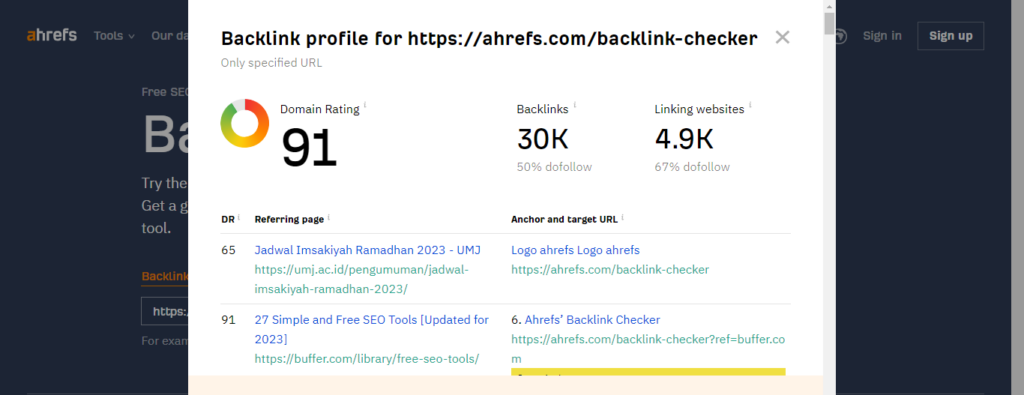Note: this article has been updated.
The original post contained only 8 SEO practices. Since then, I’ve learned new tips that you should also add to your arsenal in the ever-changing SEO world.
SEO best practices are tasks designed to enhance a website’s search engine rankings. They include on-site optimization, keyword research, and creating backlinks to a site.
Why should you care?
Following SEO best practices can get you to the top of search results — or at least the first page. And so?
According to a Backlinko study [of analyzing 4 million search results], only 63% of clicks drip to the second page. So, being on the first page matters.

The study further revealed that being on the first page isn’t enough. You have to get to the number one result. That way, you can enjoy a significant 27.6% of all clicks.

Bottom line:
SEO best practices are a big deal. Follow them to dominate search results and get clicks.
That said, let’s dive into the practices.
Use HTTPS
HTTPS secures your website’s pages by encrypting data transmitted between visitors and the server. Since 2014, it has been a Google ranking element.
But besides being a ranking factor, HTTPS helps visitors too. It shows visitors that their details are safe from hackers and scammers.
So, how can you confirm if you already use the HTTPS?
- Check the loading bar in your browser to see whether your site is already utilizing HTTPS.
- Is there a lock icon before the URL? If yes, you’re set to go.

Otherwise, install an SSL certificate.
The good news: you only need to switch to HTTPS once. Once deployed, every page on your site, including future ones, will be secure.
Include Your Primary Keyword Early In Your Content
It goes without saying that you should use your keyword a few times on your website. However, you may be unaware that the keyword’s position also matters.
You should SPECIFICALLY include your primary keyword at least once at the top of your page. Why?
Google emphasizes terms at the top of a page.

For example, this page on my site is geared around “mobile SEO.”
Optimize Your Meta Description
A meta description is a meta tag that describes the content of a page. It is frequently featured in the SERP below the title and URL of your page.
A typical meta description looks like this:

So, how can you optimize your meta description?
Your meta descriptions should provide a brief and relevant overview of your content. That way, readers know the basics before they dive into the piece.
And when written well, meta descriptions can be effective hooks.
How brief should you aim for?
Google’s standard is 155-160 characters [mind you, the space between characters is inclusive]. If your meta description is longer than that, it’ll be automatically truncated.
In summary, don’t overshare in your meta description. Include the gist of your article. Make it brief but not “too brief” to keep readers interested.
Below are some tips to optimize your meta descriptions:
- Create a distinct meta description for each page
- Make use of action-oriented copy
- Include your desired keyword
- Comply with search intent
Image Optimization
Images are critical to boosting a visitor’s user experience. When used correctly, you’ll do more than engage users. You will increase your site’s overall SEO results and organic traffic.
That said, here are the top 4 ways to optimize your image for search engines:
- First, use the most appropriate file format — I’ll recommend PNG over JPG. However, WEBP seems to be the best of both.
- Compress the images — ensure the quality is retained despite the compression.
- Provide alt descriptions — this will enable bots to interpret your image. Plus, that’s another opportunity to add your keywords.
- Lazy-load your images — set your images to load last or on-click. This will reduce loading time.
Target A Topic With ‘Search Traffic Potential’
Keyword research is an essential part of SEO. Otherwise, you’ll spend time, effort, and money attempting to rank for keywords no one searches for.
Let’s assume you sell software lessons. Because there is no search traffic for a keyword like “how do I make the font larger in a coffee cup HTML editor,” targeting it makes no search volume.…

…. and the highest-ranking page receives no organic traffic:

However, while search volume is a good predictor of traffic potential for this phrase, it may be deceptive.
Consider the following two keywords:

The former has better monthly search traffic. But the top-ranking result only receives an estimated 65 organic US visits per month…

…against 191 visits to the website in first place for the lower volume keyword:

This is because the page ranking for the lower volume keyword is part of a broad topic and receives traffic from other keywords.
In other words, a coffee cup lesson is more popular than a review.
So, while search volume is a fantastic approach to filter for keyword ideas, always verify predicted traffic to the sites that rank to obtain a more accurate picture of the search traffic potential.
Build an Internal Linking Structure
Internal links are vital for developing information hierarchies. They assist Google in understanding the material on your website.
And when utilized correctly, internal links can boost the results of your SEO campaigns. How?
Internal linking helps with spreading link juice.
When you send links from top-ranking pages on your site to the less-performing ones, you will spread out your link juice. In other words, you’ll send authority to your money pages.
However, internal link building isn’t a stroll in the park. It must be planned appropriately. Otherwise, no equity will be shared on your money pages.
Worse case: you might be flagged for link spamming.
Optimize Your URLs for Search Engines
A proper URL structure informs visitors and search engines about the content of the destination page. So, do away from generic names or numbers.
Use your keywords or significant questions/phrases. Also, arrange your URLs logically and in the most human-friendly way possible.
Keeping this in mind, here’s how to get started creating well-structured URLs:
- Use short URLs — according to Backlinko research, short URLs beat long URLs in SERPs.
- Include your desired keyword — this improves your chances of appearing higher in search results, always include your primary keywords in the URL.
- Include categories or subfolders — If you own an e-commerce site [or sell things], you may have a “store” subcategory. Include such subs in your URL. It’ll assist visitors and search engines in navigating your website.

Create Detailed Content
We previously said that search volume isn’t necessarily a strong indication of organic traffic potential because many pages receive traffic from long-tail searches.
For example, this website ranks first for “best laptop brands”…

However, it [the website] ranks in the top ten for over 300 other keywords, including “best computer brands” and “is Lenovo a decent brand”:

That is not unusual.
So, how can you improve your ranking for additional queries?
Make your content more comprehensive and valuable.
Before writing, while planning, ask:
- Will readers benefit from my content?
- If the article is how-to content, will a beginner understand the steps?
- How do you plan to fulfill the promises in your introduction?
Overall: detailing is not necessarily about word count. Your content can be detailed if it contains the relevant subtopics — matches search intent, and answers the KEY questions.
Note:
This practice, while best suited to informational posts, applies to all forms of content.
Diversify Your Anchor Texts
Anchor texts are link holders that describe what a target post entails to Google — and readers. The standard practice is to use the exact match keyword.
However, that is overly abused. Mix it up with other methods.
- Try brand anchors — anchors to your brand or company name
- Also, use generic anchors.
Overall: maintain a healthy ratio of anchors. And, of course, exact-match keywords will retain the highest of the lot.
Pro tip:
Don’t use naked URL anchors. They add zero to no impact to your SEO efforts. Plus, they are visually pleasing.
Do Better Than CTAs
CTAs, call to action, are the pointers that instruct readers to do your bidding. While they are not necessarily SEO-focused, they aid conversion.
In essence, CTAs are just as crucial to your titles, images, and web speed.
That said, how can you do better than CTAs?
Well, CTAs can be somewhat authoritative. Buy now, click here, subscribe today, download now…
Doesn’t that sound off to you?
Would you answer if a stranger talked to you in such a way?
So, you can do better. Be less salesy. Stir emotions. Here is how:
- Instead of “buy now,” say “invest a token to secure your financial freedom.:
- Instead of “subscribe today,” say, “you can join this 5-figure value newsletter for free if you subscribe today.”
- Instead of “download now,” say, “get the secrets I used to get jobs from Fortune 500 companies.”
In summary, call to benefit instead of “just action.” Encourage readers to do X or Y. Don’t just instruct them without explanation.
Create Linkable Assets
Linkable assets are the magnets you dangle at target sites to get backlinks. They include guest posts, free tools, infographics, and other resources.
And before you roll your eyes that linkable assets are not worth your time, look at this:

FYI: the screenshot is for Ahrefs’ Backlink Checker.
The image reveals that the tool has over 30K backlinks from 4.9K websites. Imagine that!
Imagine if your money page has something like that. How much traffic and sales would you make?
Let’s say you convert just 20% of traffic!
Bottom line:
Linkable assets matter. And creating them is an effective tactic in SEO.
Copy Your Competitors
This is another link building practice. It is new. Nevertheless, it remains effective, especially in competitive niches.
So how can you copy competitors?
I explained the steps in this guide: how to do SEO competitor analysis…
Target Zero-Volume Keywords
First, let me clear this up:
Zero-volume keywords don’t mean queries with zero search data.
Instead, it means that the “queries” are so super-focused and super-niched that SEO tools can’t provide their data.
And say the tools did find these keywords, they often have low search volume.
Now, that is out of the way. So, should you be targeting a keyword with low search volume?
Short answer: yes.
Zero-volume keywords have less competition. So, they are easier to rank.
More importantly, zero-volume keywords help you write more for your audience — instead of writing what everyone is writing.
Pro tip:
Save time and energy by turning your FAQs [which are already zero-volume keywords] into blog posts.
Build A Presence On Social Media
No doubt that SEO influences traffic, conversion, and sales. However, it is not enough.
Combine your SEO with social media marketing.
Go online. Join forums. Join discussions. Build a presence and following. Be the face of your business.
Why?
- First, building a following is like having an email list. You can sell to your followers.
- More importantly, you can test your content ideas on social media before writing. You can weigh your audience’s opinion and write user-generated content.
Collapse Unnecessary Pages
Earlier, we mentioned link juice and internal link building. Here is the secret about that:
The more link juice is shared, the lower the impact the ranking and authority passed.
So, there is no point in building a 15-page website and spreading your link juice unnecessarily. Conserve the juice by collapsing the redundant pages.
For example, you don’t need a testimonial page. It’s redundant. Do this instead; place your reviews at the footer of your homepage and service pages.
Also, you don’t need a separate page for your team. Collapse and merge it with your about page.
Pro tip:
Scrutinize your web pages. Cut and merge until you only have the essential pages left.
Never Assume It Is Enough
Even after following the tips in this piece, know this:
SEO is constantly changing. So, stay updated.
Overall: the key to sustainable success is to monitor data and performance. Don’t imagine you’re employing the best keywords and expect to rank first.
Following trends, assessing competition, and making changes contribute to Internet success.
Lastly, tailor your plan to the times. Some of the finest SEO techniques only include paying attention to outcomes.

